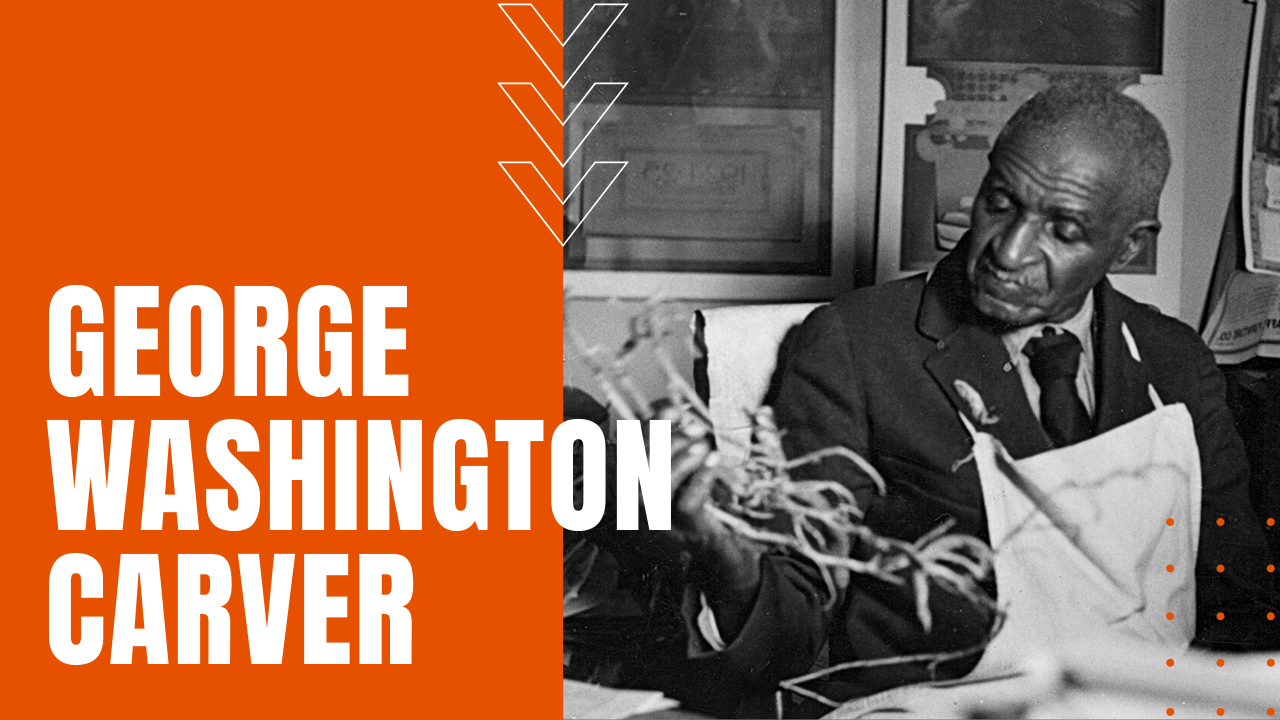George Washington Carver

Born into slavery in 1864 Diamond Missouri, as an infant he was kidnapped from white slave owner Moses Carver’s farm, and while George was eventually returned to the farm after being sold in Kentucky, as he grew older, Carver became known as “the plant doctor” by local farmers, due to his knack for improving the health of gardens, fields and orchards.
Rejected from Highland College in Kansas for the color of his skin, in the late 1880s, Carver enrolled in Simpson College, and while he originally planned to study art and piano with the hope of becoming a teacher, Professor Etta Budd encouraged him to apply to Iowa State’s Agricultural School to study botany.
First Black Man to Earn Bachelor of Science Degree
In 1894, Carver became the first African American to earn a Bachelor of Science degree, and due to his research into fungal infections of soybean plants, he was invited into a masters program by his professors, where he worked under famed mycologist Louis H. Pammel, further sharpening his ability to identify and treat plant diseases.
Upon his graduation in 1896, Carver accepted a teaching post at the Tuskegee Institute in Alabama, at the behest of Tuskegee founder Booker T. Washington, where the two men frequently bucked heads over Carver’s desire to teach less and research more. After Washington passed away in 1915, Carver would get his way when succeeding president Robert Russa Moton took office, allowing Carver to focus primarily on research.
Carver Discovers Crop Rotation
Through his work in soil chemistry, Carver discovered that repeated cotton crops reduced harvest yields due to the depletion of nutrients from the soil. Carver then experimented with his concept of crop rotation, proving that growing nitrogen-fixing plants such as peanuts, soybeans or sweet potatoes, increased harvest yields when fields were later reverted to cotton crops.
What Did George Washington Carver Invent?
Carver reached national celebrity status—as well as the nickname “the peanut man”—due to his development of more than 300 food, industrial and commercial products from peanuts, including milk, Worcestershire Sauce, cooking oils, cosmetics and peanut-based medicines such as antiseptics and laxatives.
In 1921, Carver impressed the House Ways and Means Committee when he spoke on behalf of the peanut industry, receiving a standing ovation, followed by the passage of high tariff protection for American peanut growers. In his later years, Carver traveled the South promoting racial harmony, as well as a meeting in India with Mahatma Gandhi to discuss nutrition and the management of plant diseases.
He passed away on January 5th, 1943, after falling down a flight of stairs at the Tuskegee Institute. Soon after his passing, President Franklin D. Roosevelt signed legislation that gave carver his own monument, leading to the construction of the George Washington Carver National Monument in Diamond Missouri, forever cementing George Washington Carver as one of the most impactful inventors in American history.
